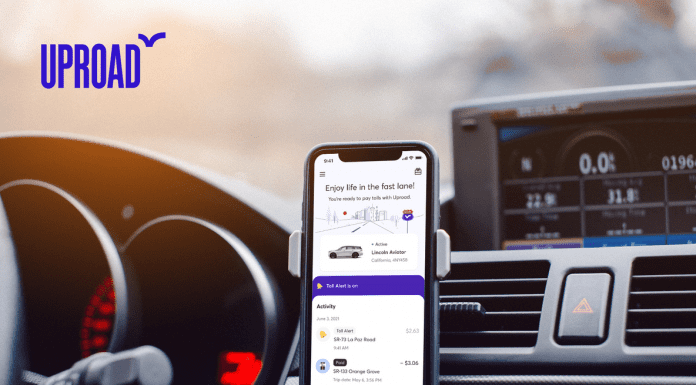The goals set by the owners of online stores are to increase conversion, increase attendance, and, consequently, sales. Tracking KPI allows you to get an accurate, current picture of the situation in online commerce to make timely adjustments to help improve the work of individual areas and the entire site as a whole.
(Top 10) Best Key Indicators for ECommerce Analytics
1. Site Traffic –
To understand when there are bursts and bursts of attendance at the online store, it is recommended to measure it within one day, week, and month. Based on these data, it is possible to determine the reasons for audience behavior and take measures to stabilize this indicator.
For guidance, indicate the number of visits that you consider optimal for your business, based on its size and capabilities. Achieving the planned number of customer visits will be your goal.
2. Reviews of Product Pages –
Highlight the pages that are most popular with your visitors. Think about what exactly attracts customers and what’s wrong with other product offerings. Make sure that users have the same access to all pages, and bad navigation is not the reason why they do not reach the right products.
3. Average Time Spent on the Site & the Average Number of Pages Viewed –
Not all marketers and owners of online stores pay sufficient attention to these indicators, as they do not consider them essential for the evaluation of the trading platform. One cannot agree with this approach because by analyzing these metrics, it is possible to draw useful conclusions and, on their basis, optimize their activities. A short stay on the site can be a sign of its long loading, which significantly reduces the traffic.
4. Exit Pages –
Knowing at what stage users leave your store, you can make adjustments to the site and minimize the loss of potential customers. Some of them may refuse to order at the registration stage, and others are not satisfied with the price of goods. Finding the places of the highest rejection of visitors, you can correct the situation.
Practice shows that most failed customers leave online stores from the following pages:
- registration;
- shopping cart;
- order processing.
This is where you need to look for reasons for refusals. Perhaps they are not satisfied with the complex procedure for completing the purchase, so they prefer to leave the site in search of a more friendly trading platform.
5. Channels to Attract Visitors –
The success of the online store largely depends on what methods of audience expansion you use. With all the variety of channels to attract customers for various projects can be most effective, not all of them, but only individual options. To find out which of them are suitable in your case, you will have to try all the ways to convey information about your store to users. These are contextual advertising in Google Adwords, and maintaining official groups on social media.
Analyzing the impact that you get from each channel to attract customers will identify those that provide the most traffic to your site, and thus it will be appropriate to increase their budget. Channels that do not give the desired result need optimization. Thus, SEO-promotion of the site will be more effective if you work on the semantic core, clarifying and specifying it.
6. The Conversion Rate –
How to understand that in your online store, everything is done to ensure that every visitor becomes a buyer? To evaluate the conversion of the site, as well as to test your own ideas for improvement with the help of A/B testing and getting data with SEO Suite Ultimate Extension for Magento 2. Based on its results, you will understand whether it is worthwhile to implement them to increase conversion.
First of all, you should optimize the most important pages:
- product card;
- registration;
- shopping cart;
- order processing.
It is advisable to try different variants of a button “To cart,” registration forms, variants of trade cards and ways of purchase (in one or several clicks, with or without registration).
7. The Return Rate of Visitors –
Pay attention not only to how many new visitors to your online store made an order but also to how many buyers returned to buy from you again. This is important to assess the interest of the target audience in your trading platform.
Do not forget the important principle of marketing: keeping existing customers is cheaper than attracting new ones. Use the contact information you receive when placing an order to send new offers, offer to join the official group of your store in social networks.
8. Buyer’s Income –
Net income can be estimated after all expenses have been deducted from the profit. The higher this indicator is, the more successful the online store is. If your income level is not sufficient, you need to think about what measures will help to correct the situation. Perhaps you should spend less on advertising the trading platform and promotion in social networks.
9. The Average Order Receipt –
The amount of the average check is calculated by dividing total revenue for a certain period, e.g., a month, by the number of orders. The resulting figure will allow you to understand what the average customer’s expenses, much or little he leaves on your site. With this data, you can think of ways to increase the average check. For this purpose, various marketing moves are used, for example, offer a discount when you reach a certain amount of the order.
10. Number of Abandoned Baskets –
Studies conducted by Baymard Institute have confirmed that the share of unfinished purchases can reach 67.75%. What causes visitors to give up the idea of buying goods already in the basket?
The reason for rejection may be one or a combination of the following factors:
- the price of the goods in the basket does not match that indicated on the card, or the total cost of the basket has increased due to delivery and no longer satisfied with the potential buyer;
- the promo code was out of order;
- there is no information about delivery to the region where the visitor lives;
- at registration the user learns about the necessity to pay tax or other unforeseen expenses;
- there is no suitable option to pay for the purchase;
- technical problems with completing the payment data.
- It is necessary to test the performance of your shopping cart regularly. Don’t be afraid to try new ways of ordering, which will make the procedure easier and more comfortable for users.
The abandoned shopping cart should not be left without your attention. Remind the visitor that he has an unfinished purchase, try to establish feedback to understand what caused the rejection.
Conclusion:
All of the indicators that we have reviewed above require your continued attention. Online store analytics are conducted in order to regularly monitor changes in its performance, both for the better and the worse, and to take appropriate measures to help improve your performance.








![[Buy Now] VOYO Q101 Review 4G Phablet Device Offer (Full Buying Guide) VOYO Q101](https://www.techinpost.com/wp-content/uploads/2017/11/image001-6-324x235.png)





